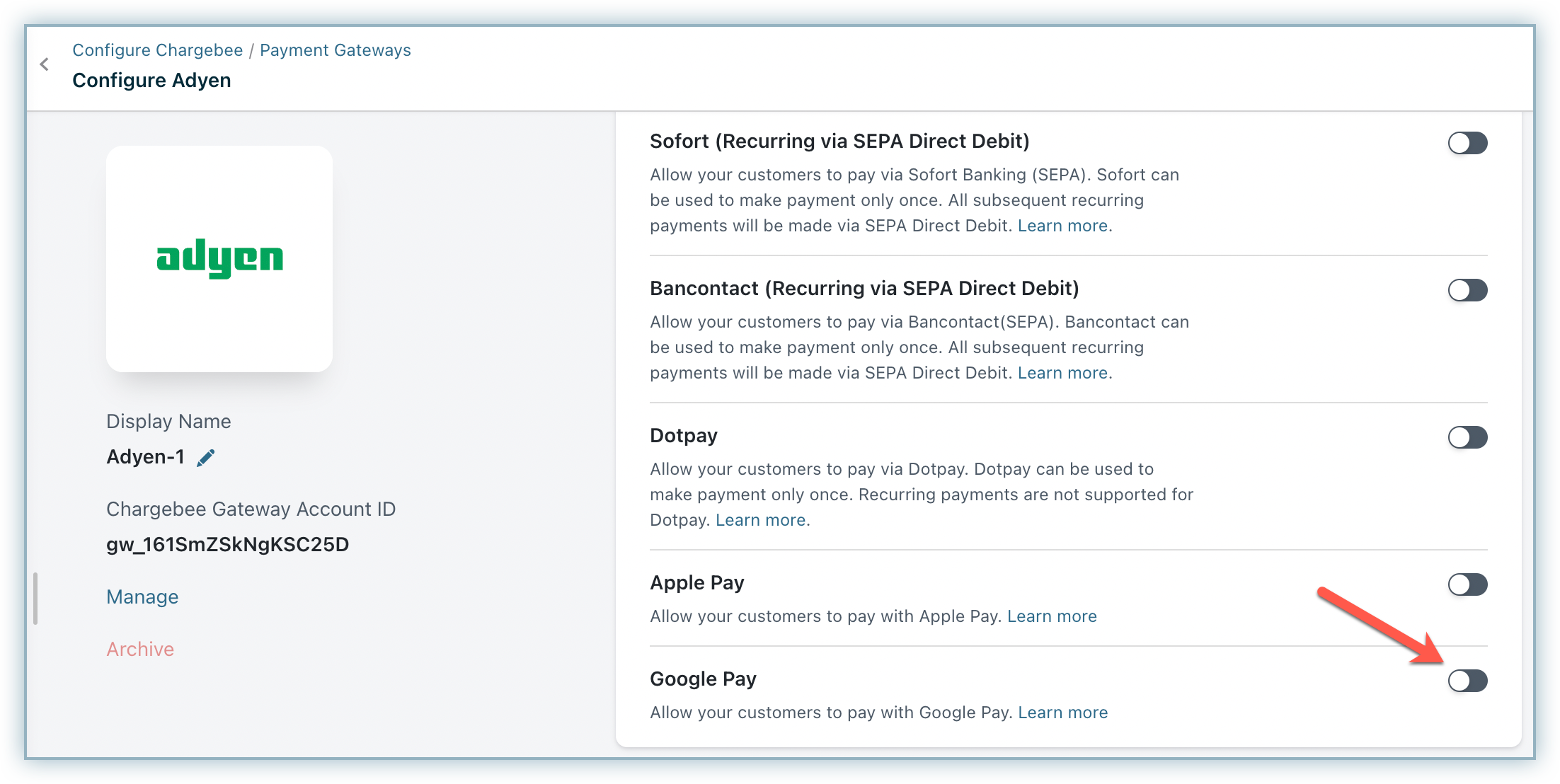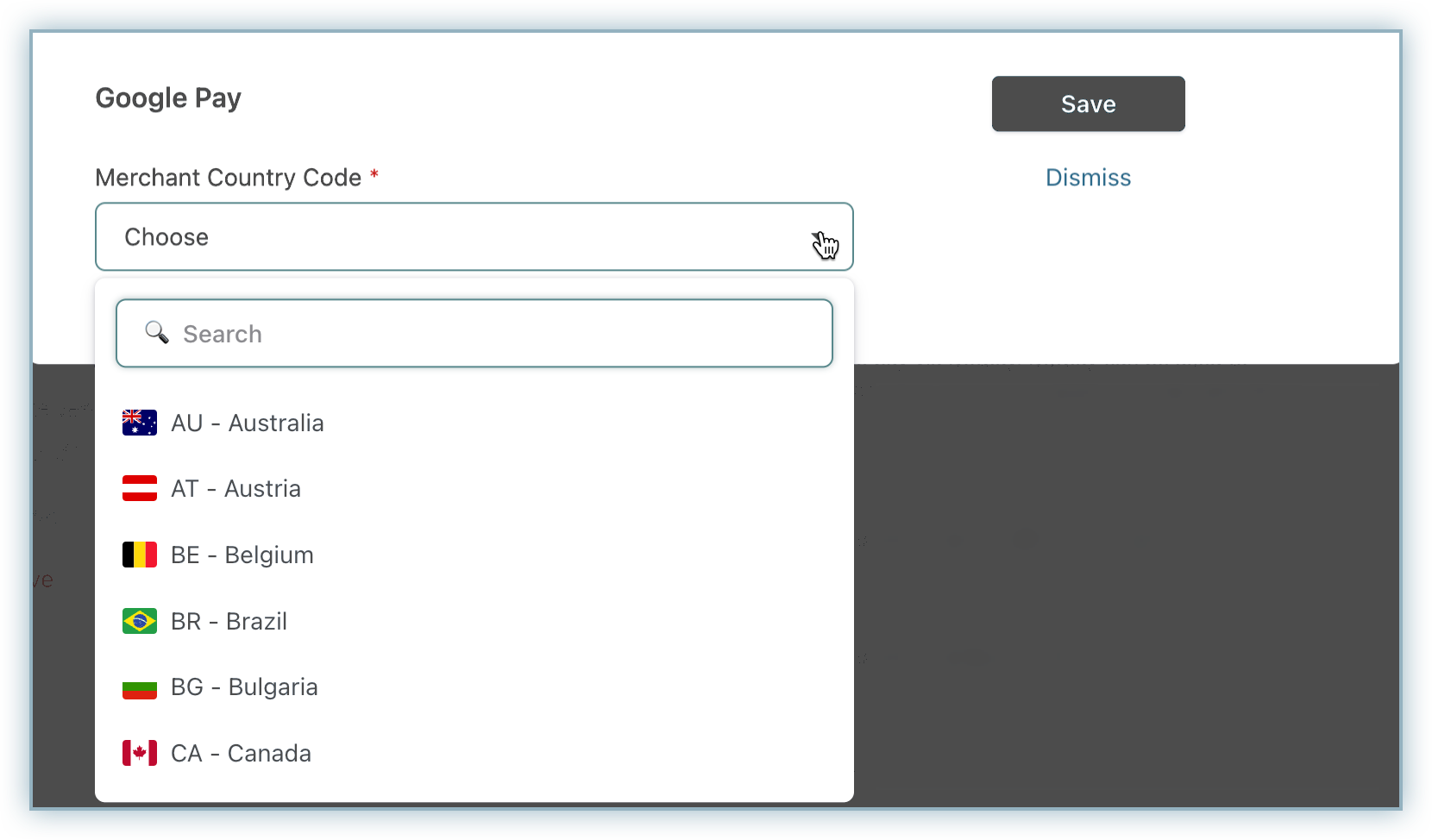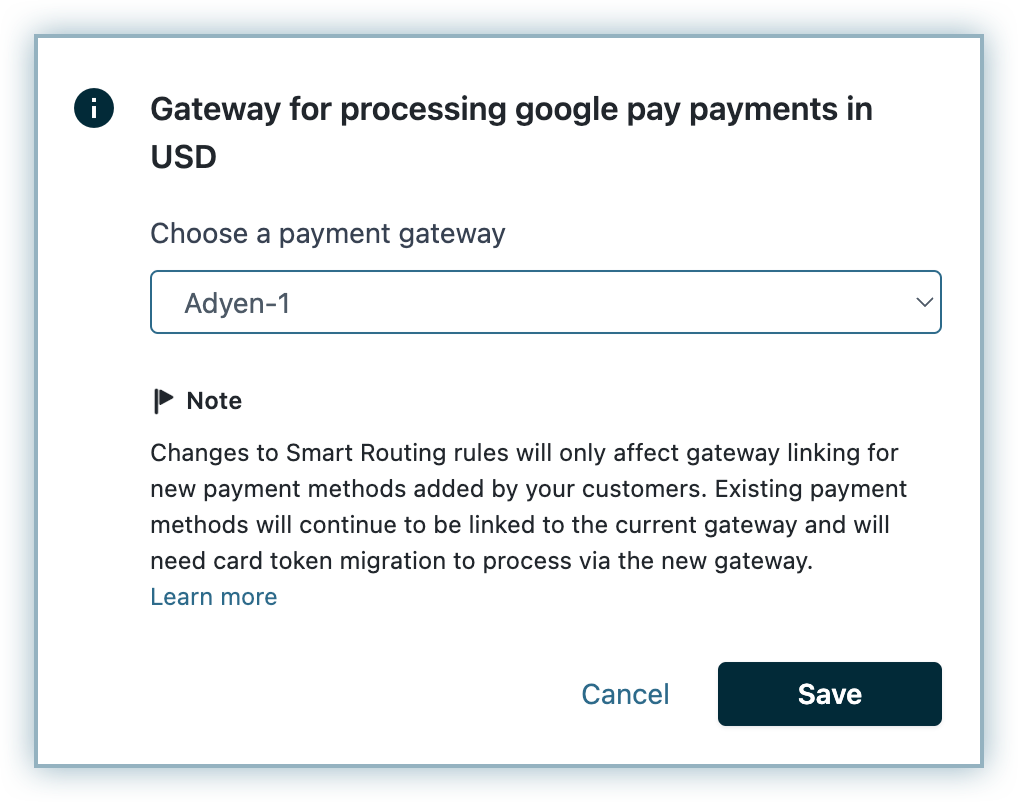Google Pay via Adyen
Google Pay allows customers to use payment instruments saved to their Google accounts. Google Pay via Adyen integration enables users to securely pay using any card (credit or debit) associated with their Google account. This integration supports both 3D Secure and non-3D Secure payment flows.
Click here to learn more about accepting Google Pay on Adyen.
Note:
This feature is available as an API integration only and is not currently supported by Chargebee's checkout.
Prerequisites
The following prerequisites apply to this integration:
- You must have an Adyen account configured to accept Google Pay payments.
- You must have access to your Adyen API Client Key. The client key is an alternative to the public key required for Adyen configuration. Read more here.
- Google Pay allows you to store payment method information in the cloud and on Android devices. Cards stored in the Google Account (cloud) are accepted for this integration.
- You can use all live cards and test cards to test the setup. Google ensures that no actual transactions take effect from the live card while using Google's test environment.
Configuring Google Pay via Adyen
Follow these steps to configure Google Pay via Adyen for your Chargebee site:
- Configure your Adyen payment gateway in Chargebee. If you have already configured Adyen, click Settings > Configure payment gateway > Adyen.
- Click Manage.

- Enter your Adyen Client Key in the Client Key field and click Connect. Click here for assistance to retrieve your Client Key.
- Toggle on Google Pay to initiate the configuration process.

- Select the country or region where the payment will be processed from the Merchant Country Code drop-down list and click Save.

- Configure your Smart Routing settings to set Adyen as the preferred gateway for Google Pay.

Google Pay via Adyen is now ready for use on your Chargebee site. Review the screenshot below for a subscription processed using Google Pay via Adyen.
Google Pay via Adyen is now ready for use on your Chargebee site. Review the screenshot below for subscription processed using Google Pay via Adyen.
Was this article helpful?